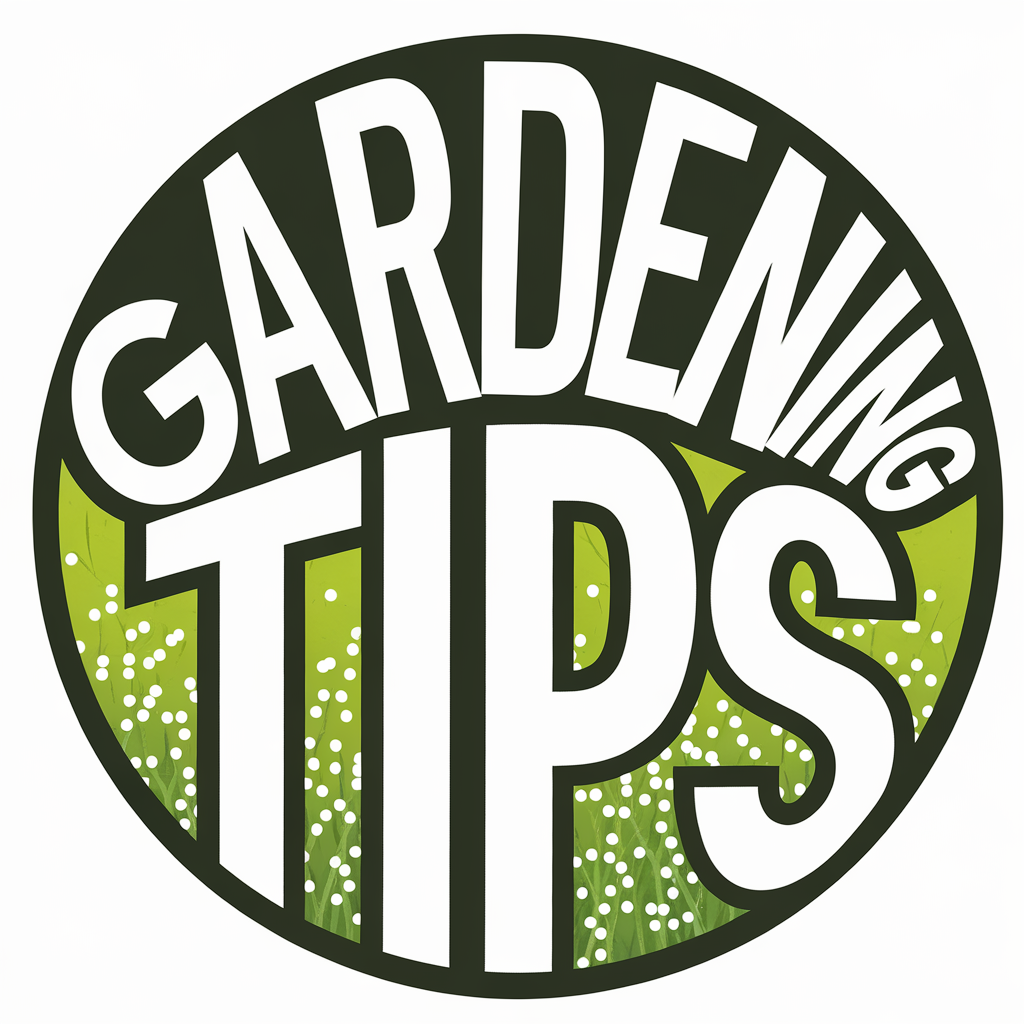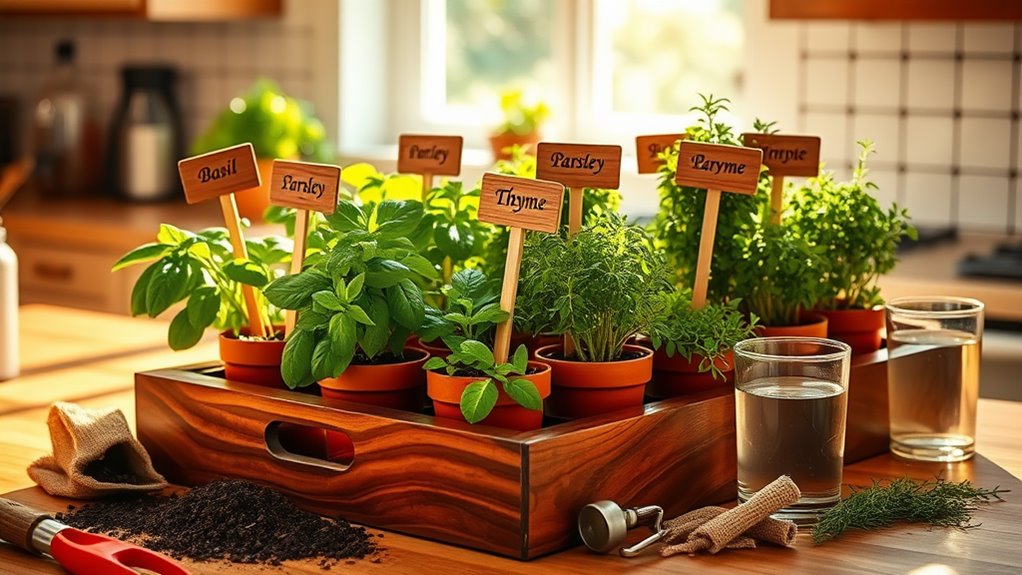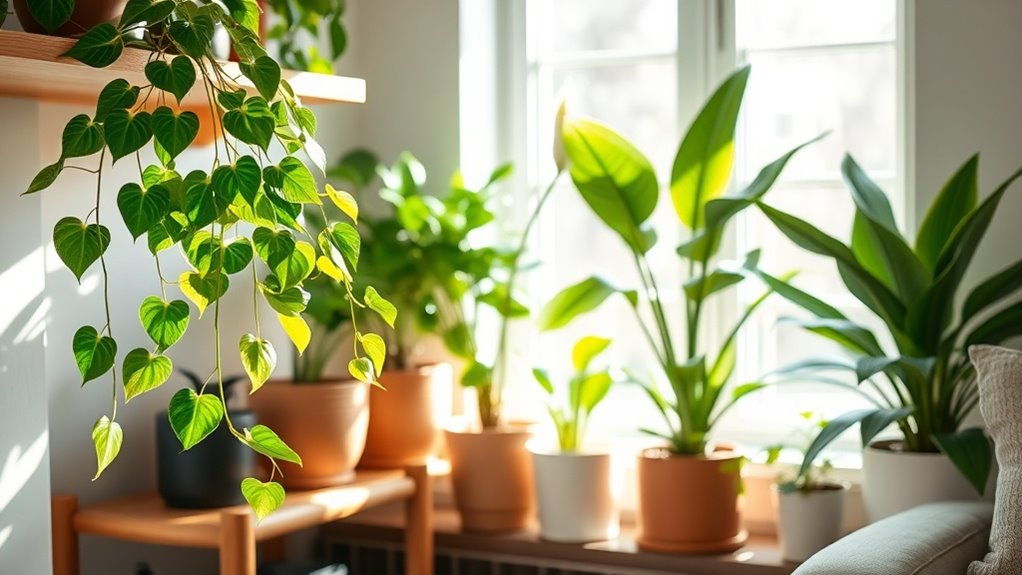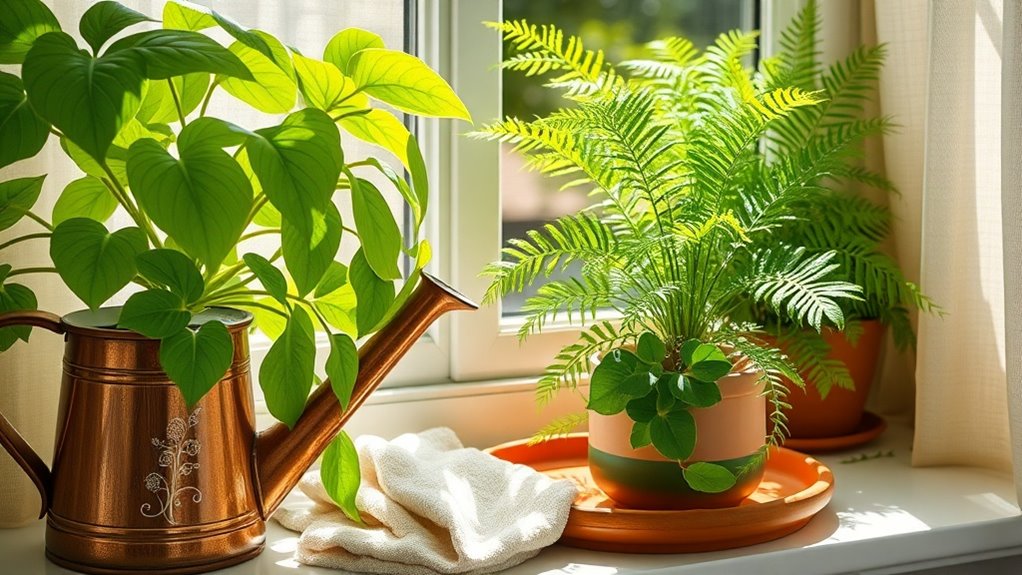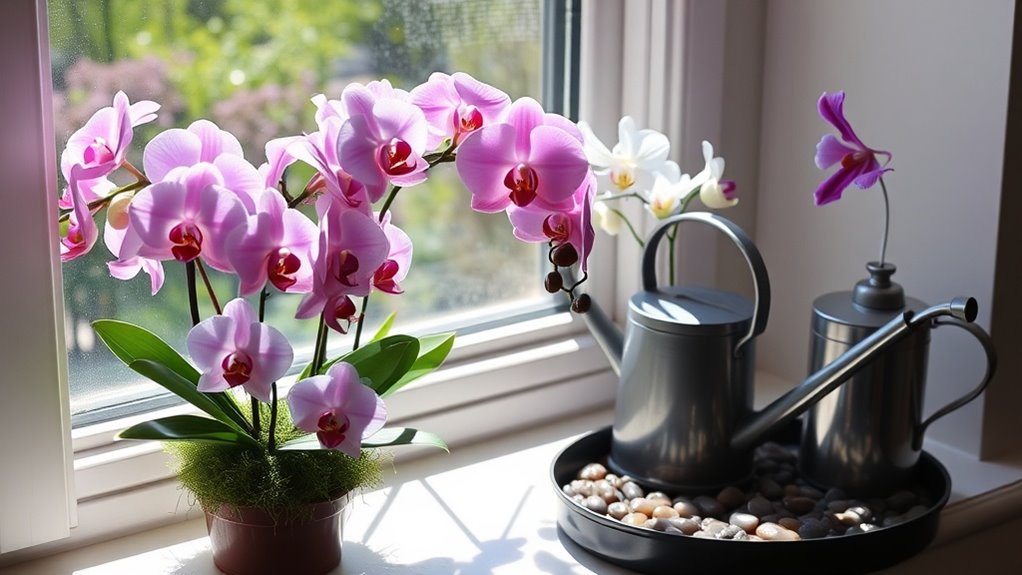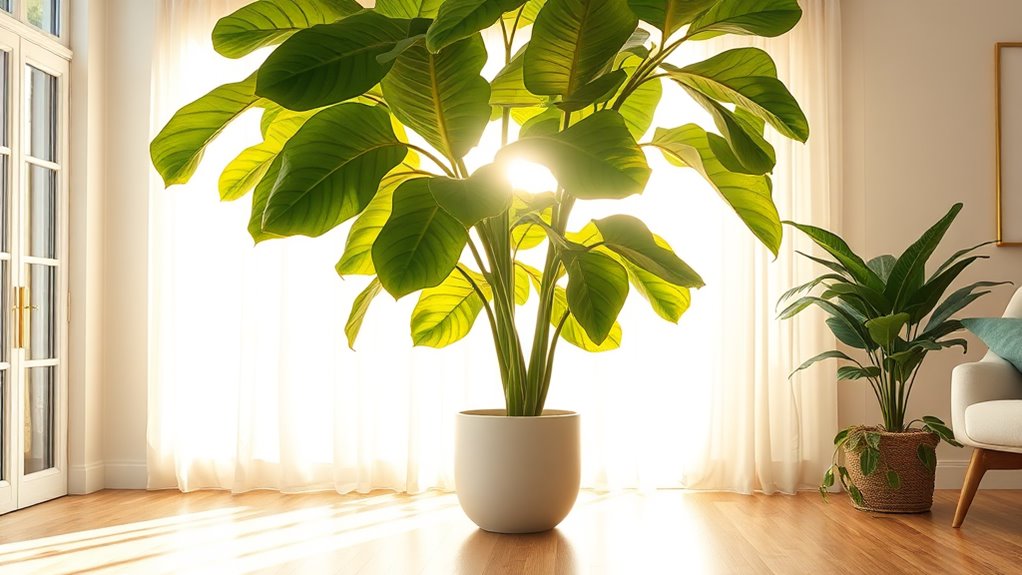How to Set Up a Mini Indoor Herb Garden in One Hour
To set up your mini indoor herb garden in one hour, first, choose easy-growing herbs like basil, parsley, or thyme. Gather containers with drainage holes, well-draining potting soil, and your chosen seeds. Clean your containers, fill them with soil, and plant 2-3 seeds per hole at 1/4 inch deep. Water lightly, then place your herbs in bright, indirect sunlight. With proper care and maintenance, you’ll soon have fresh herbs to enjoy in your cooking. There’s more to explore!
Choosing the Right Herbs for Your Indoor Garden
When you’re setting up your mini indoor herb garden, how do you decide which herbs to grow?
Start by considering your cooking preferences—basil, cilantro, and parsley are popular choices for many dishes.
Think about the climate in your home; some indoor herbs, like mint and chives, thrive in lower light, while others, like rosemary, prefer brighter spaces.
Also, consider the growth habits of each herb; some might require more space than others. Additionally, container gardening allows you to maximize your limited space while enjoying fresh herbs year-round.
Essential Materials You Will Need
To successfully set up your mini indoor herb garden, you’ll need a few essential materials that guarantee your herbs thrive.
Gather these items before you start:
- Containers: Choose pots with drainage holes for ideal soil health.
- Potting Soil: A lightweight, well-draining mix is essential for healthy roots.
- Seeds or Seedlings: Select your favorite herbs to grow, like basil or parsley.
- Watering Can: A small, easy-to-handle can makes it simple to keep your herbs hydrated.
Additionally, consider using fresh herbs to enhance the flavor of your meals throughout the year.
Once you have these materials, you’re ready to create your indoor oasis!
Preparing Your Containers and Soil
Before you start planting your herbs, it’s crucial to prepare your containers and soil properly for ideal growth.
First, choose containers with drainage holes to prevent waterlogging. Clean them thoroughly to remove any residues.
Next, fill each container with a high-quality potting mix designed for herbs. This mix should be well-draining yet retain moisture. You might also consider adding perlite or vermiculite to enhance aeration.
Once your containers are filled, lightly moisten the soil without soaking it. This sets the stage for healthy root development and guarantees your herbs will thrive in their new environment. Additionally, using low-maintenance herb gardening techniques can further simplify the maintenance of your indoor garden.
Planting Your Herbs
With your containers and soil prepared, it’s time to plant your herbs.
Follow these simple steps for successful planting:
-
Select Your Herbs: Choose herbs like basil, parsley, or thyme that fit your cooking needs and space.
-
Create Seed Holes: Use your finger or a pencil to make small holes in the soil, about 1/4 inch deep.
-
Sow Seeds: Place 2-3 seeds per hole, ensuring they’ve room to grow.
-
Cover and Water: Gently cover the seeds with soil and lightly water to keep the soil moist but not soggy.
Incorporating one extraordinary herb can significantly enhance your indoor gardening experience.
Now you’re ready to watch your garden flourish!
Optimal Care and Maintenance Tips
To keep your mini indoor herb garden thriving, you’ll need to establish a solid watering schedule, understand each herb’s sunlight requirements, and implement pest management strategies. Regularly checking moisture levels and adjusting light exposure will help your herbs flourish. Additionally, staying proactive about pests can prevent potential damage and maintain a healthy garden. Incorporating low-maintenance herbs into your selection can further simplify care and ensure a successful indoor garden experience.
Watering Schedule Essentials
How often should you water your indoor herb garden for ideal growth?
Consistency is key, but it varies by herb.
Follow these essentials for effective watering:
- Check Soil Moisture: Stick your finger about an inch deep; if it’s dry, it’s time to water.
- Watering Frequency: Generally, water every 5-7 days, but adjust based on plant needs and humidity levels.
- Drainage: Make sure pots have drainage holes to prevent root rot.
- Watering Technique: Water at the base of the plant to avoid wetting leaves, which can lead to fungal issues.
Sunlight Requirements Explained
Watering your indoor herb garden is just one part of the equation; sunlight plays an equally essential role in ensuring your herbs thrive. Most herbs need about 6-8 hours of bright, indirect sunlight daily. Place your garden near a south-facing window for ideal light exposure. If natural light is insufficient, consider using grow lights to supplement.
| Herb | Sunlight Requirement | Ideal Location |
|---|---|---|
| Basil | 6-8 hours | South-facing window |
| Parsley | 4-6 hours | East-facing window |
| Thyme | 6-8 hours | South or west-facing |
Pest Management Strategies
What can you do to keep your indoor herb garden free from pests?
Here are some effective strategies:
-
Inspect regularly: Check your herbs for pests every few days.
Early detection keeps infestations manageable. -
Use neem oil: This natural pesticide repels insects without harming your plants.
Spray it on leaves once a week. -
Introduce beneficial insects: Ladybugs and lacewings can help control harmful pests naturally.
-
Maintain cleanliness: Remove dead leaves and debris from the soil to minimize hiding spots for pests.
Harvesting and Enjoying Your Fresh Herbs
Once your herbs have reached a sufficient height, it’s time to start harvesting—typically around 6 to 8 weeks after planting.
Use sharp scissors to snip off the leaves or stems, cutting just above a pair of leaves to encourage regrowth.
For herbs like basil and mint, harvest regularly to keep them bushy.
Always gather only what you need for the day to maintain freshness.
To enjoy your herbs, wash them gently and add them to your favorite dishes, salads, or teas.
You’ll love the vibrant flavors in your cooking, bringing a touch of your garden right to your table.
Additionally, avoiding common mistakes in herb care will help ensure your plants continue to thrive and provide you with fresh herbs for longer.
